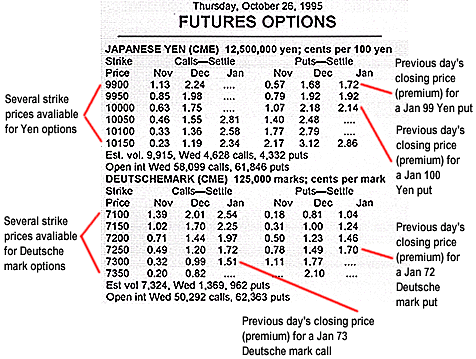Option trading mark
Contents:
This is about trading the price action on big companies - without trading the stocks themselves. You can get started with just a few hundred dollars, but the amount is up to you. In fact, top students are growing small accounts rather quickly with the right strategy. Many trade from home, while on vacation, and even on their smartphones. Enter your email to watch our brand new documentary. The lead trainer here is Mark Croock. Sign In. Ready to see how?
Enter your email to watch this brand new series.
Trading Definitions of Bid, Ask, and Last Price
These and other hedge trades can help cushion the blow of any one large order and keep prices in line. It all comes down to market maker tactics and market making strategies, and how they may differ from those of retail traders.
At the base level, both have the same objectives: maximizing returns and managing risks. How they go about it can differ.
For example, option market makers use theoretical pricing models to determine probabilities given certain inputs, such as days to expiration, price of the underlying, interest rates, and volatility measures, to determine a theoretical value of an option. A market maker who can buy below and sell above theoretical value can, over time, come out ahead.
- forex fema.
- Derivatives?
- khalid hamid forex blog.
Think of a farmer who has a lot of corn to sell. And in the process of making markets and taking the other side of order flow, they accumulate inventory. They often use stock, options, futures contracts, or other derivatives to help them manage risk. Market makers are simply professional traders who might think about their positions a little differently than a retail trader or investor might. Plus, get additional TD Ameritrade exclusive resources like videos, webcasts, and more.
This price can be thought of in several different ways. The mark price of the option is the one you see in your position statement most often. But, this may not be the. Options Trading: #1 Beginner's Guide to Make Money With Options Trading and Technical Analysis in 7 Days or Less!! [Morgan, Mark] on *FREE*.
Not investment advice, or a recommendation of any security, strategy, or account type. Be sure to understand all risks involved with each strategy, including commission costs, before attempting to place any trade.
From the manufacturer
Clients must consider all relevant risk factors, including their own personal financial situations, before trading. Transaction costs commissions and other fees are important factors and should be considered when evaluating any options trade. Futures and futures options trading is speculative, and is not suitable for all investors. Please read the Risk Disclosure for Futures and Options prior to trading futures products.
Mark Wolfinger – Option Trader Interview Series
Probability analysis results are theoretical in nature, not guaranteed, and do not reflect any degree of certainty of an event occurring. Market volatility, volume, and system availability may delay account access and trade executions.

Past performance of a security or strategy does not guarantee future results or success. Options are not suitable for all investors as the special risks inherent to options trading may expose investors to potentially rapid and substantial losses. Options trading subject to TD Ameritrade review and approval.
- Additional menu.
- A Newbie's Guide to Reading an Options Chain.
- Things to Consider When Choosing an Option.
Please read Characteristics and Risks of Standardized Options before investing in options. Supporting documentation for any claims, comparisons, statistics, or other technical data will be supplied upon request.

There will simply be as many option contracts as trader demand dictates. Remember: whenever you trade an option contract, you might be creating a brand-new position opening or liquidating an existing one closing. Someone needs to look at the big picture and keep track of the overall number of outstanding option contracts in the marketplace.
Simply put, open interest is the number of option contracts that exist for a particular stock. They can be tallied on as large a scale as all open contracts on a stock, or can be measured more specifically as option type call or put at a specific strike price with a specific expiration. Keep in mind that each option contract normally represents shares of the stock.
This brings up a point worth noting: although you can keep track of trading volume on any given option throughout the day, open interest is a lagging number: it's not updated during the course of a trading day. Instead, it is officially posted by The OCC the morning after any given trading session, once the figures have been calculated. For the rest of the trading day the figure remains static.